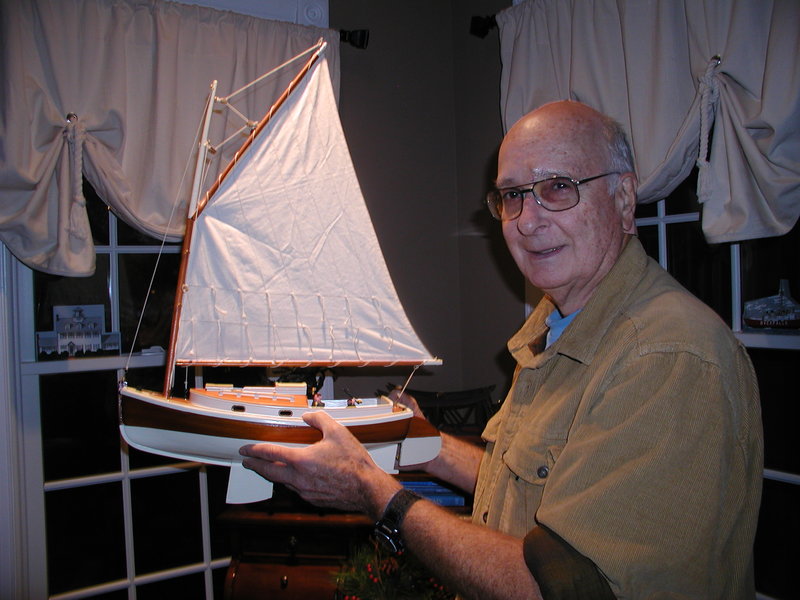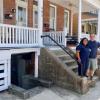Lewes’ Walt Crafts is most at home on water
Ask Walt Crafts what he’s done over the course of his lifetime, and he says, “Not much, really. Certainly nothing worth writing about.”
But when he takes a few moments to reflect, Crafts talks about learning to sail before he was in his teens, teaching himself how to program an IBM computer when punch-cards were state-of-the-art, and writing computer programs for a rocket scientist working on motors for an aircraft that would become the first to break the sound barrier.
Crafts, a Lewes resident, first came through the town around 1964. He was with a church group from Washington, D.C., that visited Cape May on Labor Day and Memorial Day.
“I knew all about Lewes because I’d come through here for the ferry,” Crafts said.
He and wife Marybeth bought a piece of property in the city and would visit occasionally, traveling from Baltimore where they lived.
“I just had a feeling that Lewes was somewhere, and Rehoboth Beach was nowhere. True, it was on a beach, but Lewes had access to the bay, the park, canal and history. Lewes had so much more to offer. We were comfortable here. I was very happy to move to Lewes,” he said.
Born in Niagara Falls, N.Y., Crafts learned to sail on Lake Ontario. “I had a friend whose father had money and a sailboat. The father didn’t have a problem with letting kids be themselves,” he said.
Takes the helm at 11
When he was 11 years old, Crafts served his first unsupervised night watch on a 40-foot, R-class sloop. “There were about five of us on board. We finished up dinner, and I had the helm. Everybody went below and got into sleeping bags, and I was up there in the dark of night with nothing but the binnacle light to guide me. Eleven-year-old boys can dream up lots of monsters in the dark that they can’t see,” Crafts said, laughing. He said that night he saw dozens of monsters.
They sailed from Youngstown, N.Y., down Lake Ontario to Hamilton, Ontario.
“I’ve often thought back about that. Eleven years old and the skipper let me be up there running the show. Wonderful experience,” he said.
Crafts said the boat owner eventually let him sail solo. “It was a little iffy, getting sails up and down. Sometimes not everything worked right, and you had to correct for mistakes. We sailed all over Lake Ontario and to Toronto and the RCYC - Royal Canadian Yacht Club. I remember running aground off the Royal Canadian Air Force Base at Trenton, Ontario. They sent their crash boat out after us. It was very exciting,” he said.
Rough seas at 13
On a sailing trip when he was about 13 years old, Crafts said conditions on Lake Ontario were a bit rough.
“All day long we pounded, up and down, up and down, and the mast was like a pile driver on the bottom of the boat. It worked the hull enough that the caulking came out. We were reduced to sticking shreds of T-shirts from inside the boat out, until we could get to shore. I thought we were going to sink,” he said.
Crafts said water was about 18 inches deep on the cabin floor. “It was exciting,” he said.
He said he could always tell when they were nearing Toronto. “Toronto smelled like onions. I have no idea why,” Crafts said. He said sailing season was April through November. “The skipper liked to sail. There might be ice on the waves when we finally pulled the boat out,” he said.
For a while, Crafts worked for Owens-Matheson, a chemicals manufacturer.
“I was in the high-energy fuels division in Niagara Falls,” he said. While there, he worked with a rocket scientist employed by Reaction Motors, the company that developed rocket engines for the Bell X-1. Chuck Yeager would fly the X-1 into the record book, becoming the first man to break the sound barrier.
They would take Yeager’s plane up out of Niagara Airport and fly it out over Lake Ontario. "They’d drop from the B-29 or whatever lifted it up there, and they would ignite it and wooof! Off it would go,” Crafts said.
He said Bell tested rocket engines at Niagara Falls Air Force Base, near his home. “You could hear the rocket tests going off like it was next door, yet it was five or six miles away,” he said.
Still sailing the seas
While in the U.S. Army, Crafts was an aircraft mechanic, and he wanted to learn to fly. For $200 he could have. “But on a PFC’s salary, $200 was like asking for the moon,” he said. Now afraid that flying could end tragically, he’s sticking with sailing.
“I get my kicks on sailboats. It’s just as dangerous, but somehow it doesn’t seem as dangerous as running a plane into a mountain,” he said.
Today, Crafts owns a 20-foot catboat, significantly smaller than the boat he learned to sail aboard.
He occasionally sails from Lewes to Cape May and back.
“It has one sail with a mast up forward. The cockpit is small enough that it’s great for two people, OK for three, but four people is a little too much for that thing,” he said.





















































